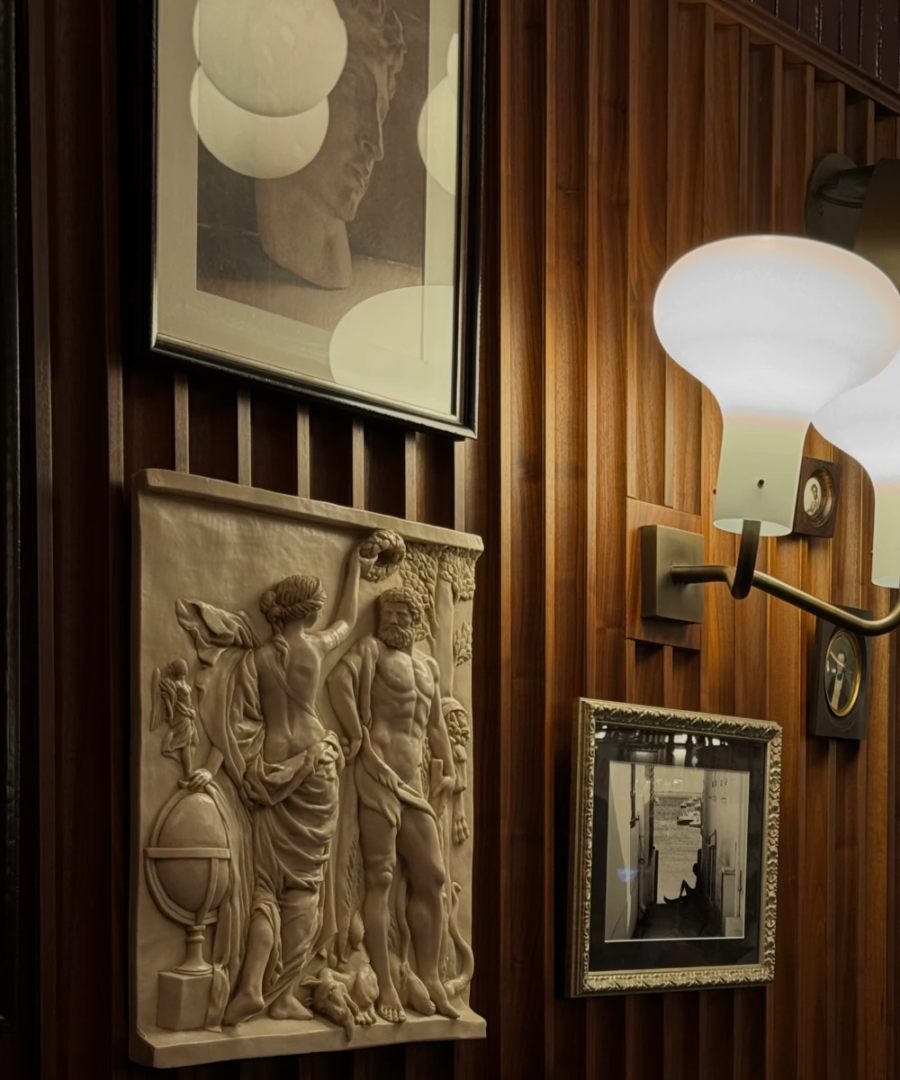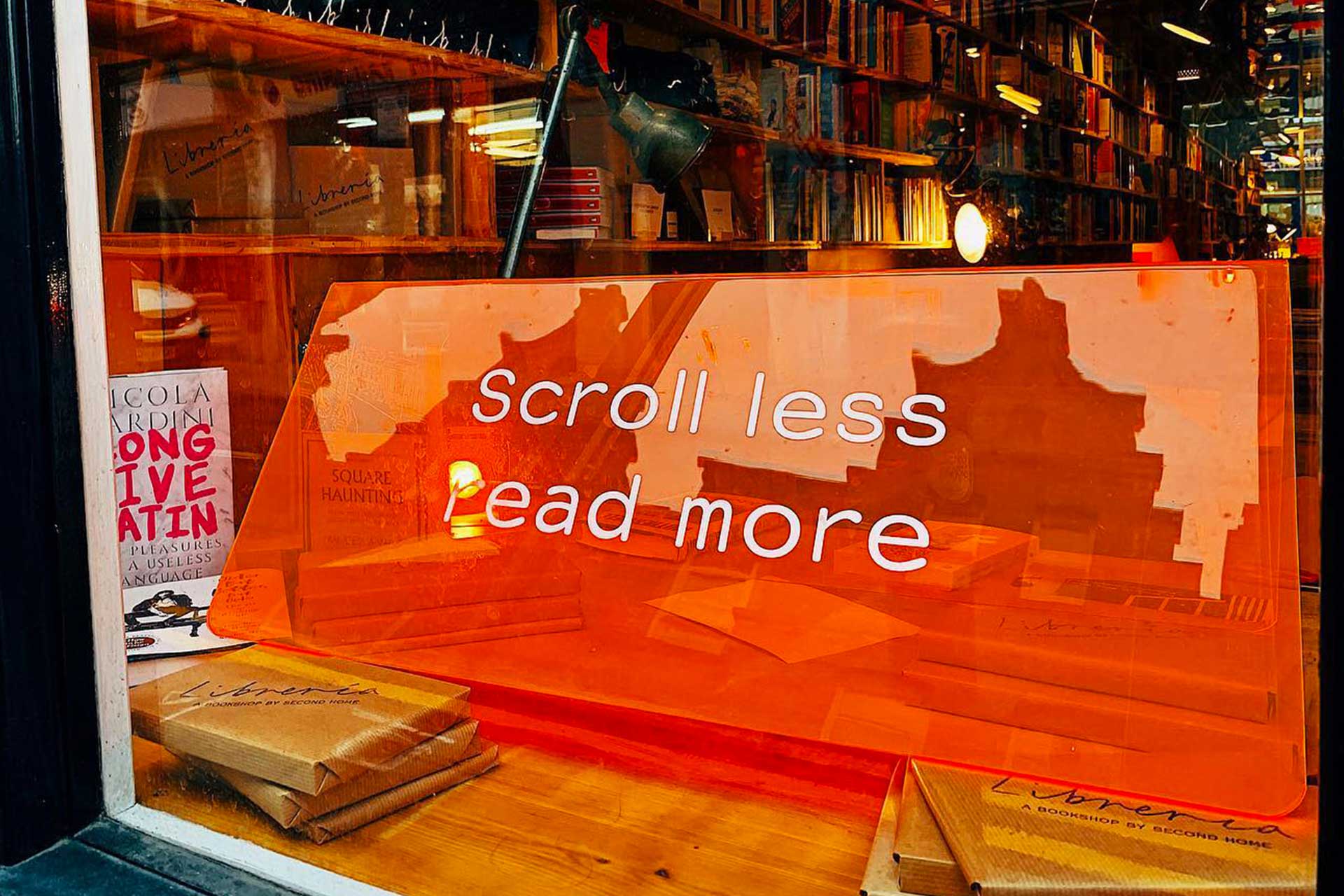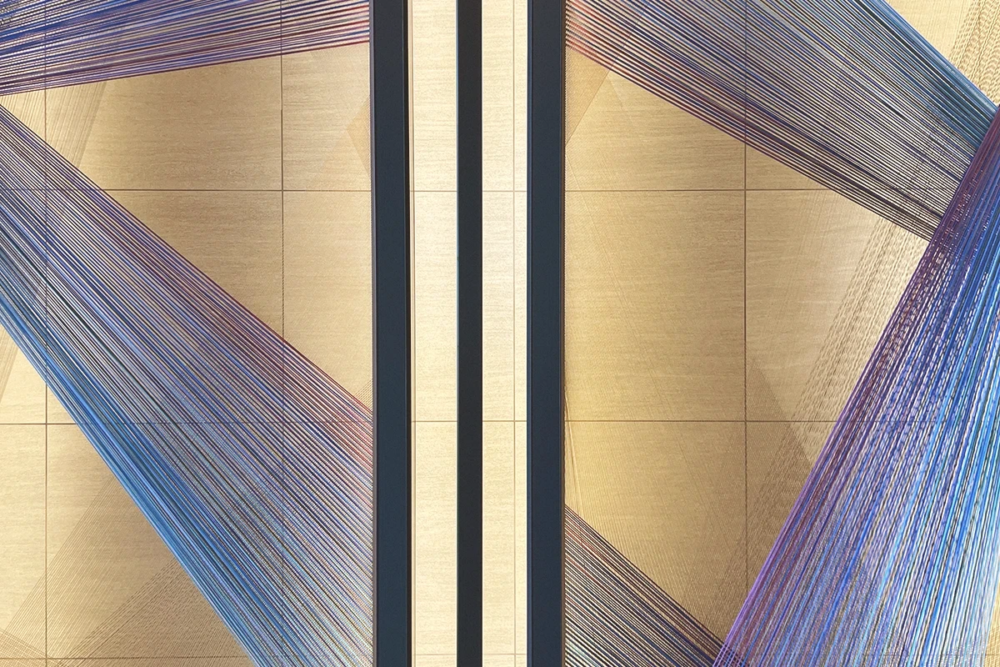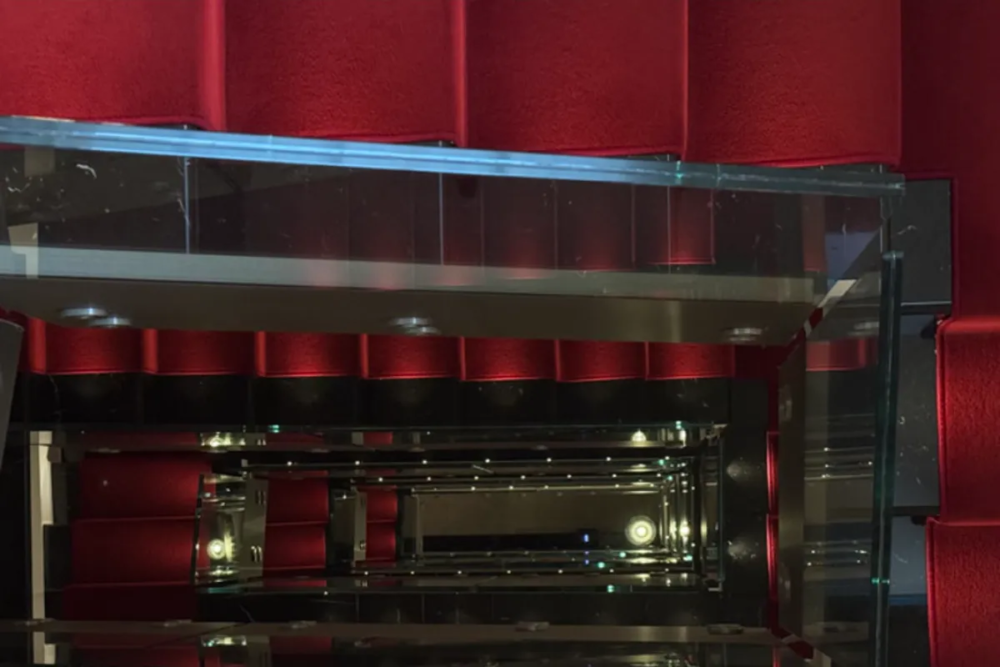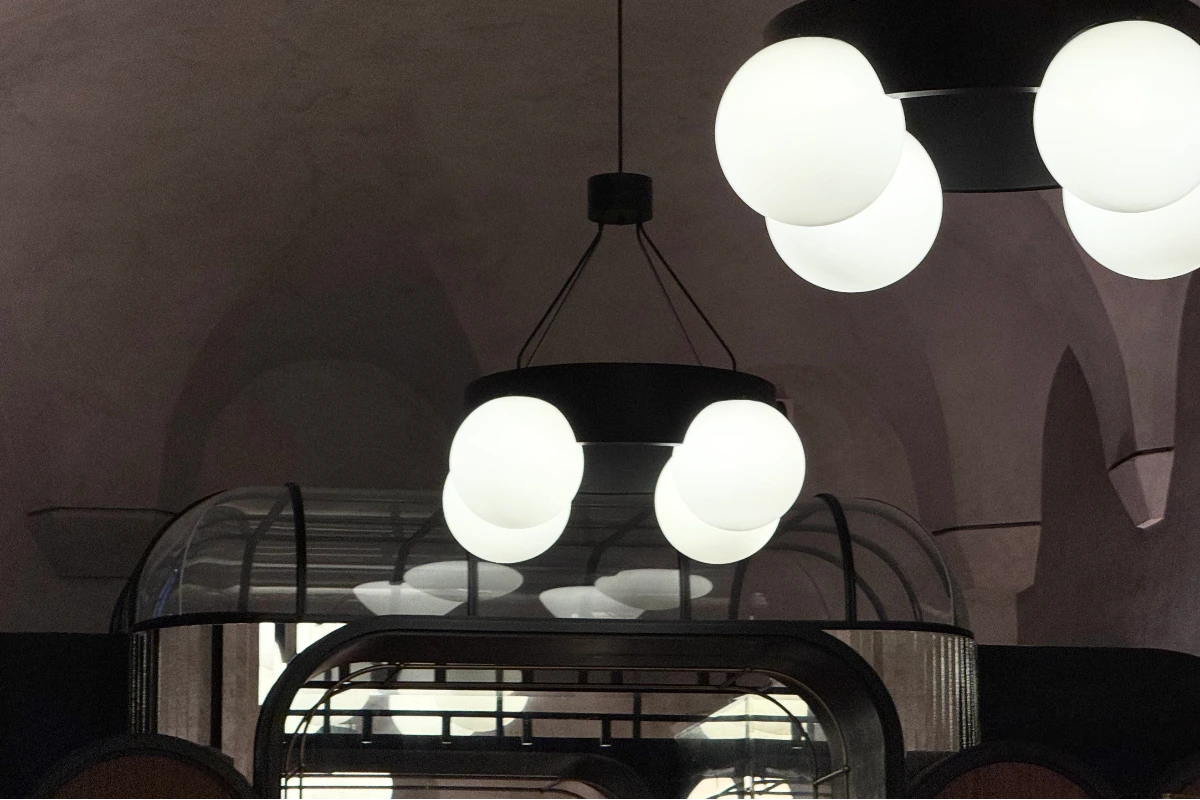
Beefbar Milano: inside the former Archiepiscopal Seminary chapel
Beefbar unites sacred architecture, Milanese material heritage, and a cosmopolitan culinary vision—revealing both the beauty and the complexities of sustainability in global fine dining
Beefbar Milano: a restaurant inside a deconsecrated chapel in the Quadrilatero
In the center of Milan, between Corso Venezia and Via Sant’Andrea, the former Archiepiscopal Seminary has re-emerged as a public square and cultural destination. The cloister, closed to the city for more than five hundred years, is now part of Portrait Milano—a project by Lungarno Collection that connects hospitality, fashion, and gastronomy. Within this setting, Beefbar Milano occupies the seminary’s former chapel, transforming an ecclesiastical interior into a restaurant while preserving its architectural essence.
Founded in Monte Carlo by Riccardo Giraudi, Beefbar emerged from a dual background in fine dining and the international meat trade. As CEO of Giraudi Group—the world’s largest importer of certified Kobe beef—he has redefined the idea of a steakhouse into a contemporary cultural format: cosmopolitan yet rooted in local context. Each Beefbar adapts to its host city, translating its architectural and culinary language into a refined but informal experience. In Milan, this philosophy finds one of its most resonant expressions, where the transformation of a chapel becomes both a design gesture and a meditation on global luxury culture.
The project reflects a broader shift in Milan, where heritage buildings are revived through adaptive reuse. What once served as a religious institution now contributes to the city’s contemporary cultural economy, balancing memory with modern function.
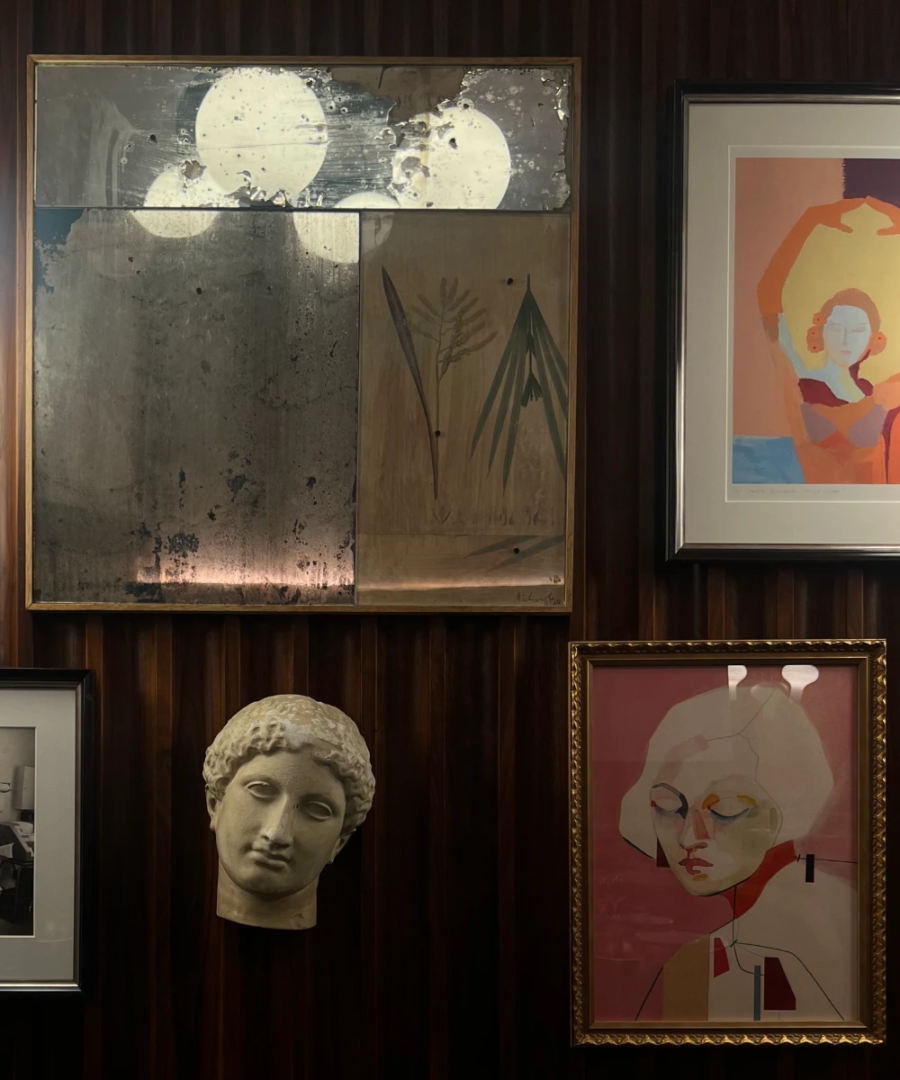
Culture as transformation: from ecclesiastical seminary to Milan’s dining and design stage
Founded in 1564 by Archbishop Carlo Borromeo, the Archiepiscopal Seminary of Milan was conceived during the Counter-Reformation to strengthen theological education across Lombardy. For centuries it remained one of the region’s most influential ecclesiastical institutions. The Renaissance cloister symbolized the withdrawal of spiritual life from the city’s daily rhythm.
Generations of priests and scholars passed through its classrooms. The chapel, with its vaulted ceilings, stood as the spiritual heart of the complex. Over time, the seminary’s role diminished, and by the twentieth century, the building was largely abandoned—its cloister locked behind high gates. In the heart of the Quadrilatero della Moda, a silent void endured, echoing Milan’s layered history.
The twenty-first-century redevelopment by Portrait Milano reopened the cloister and introduced new functions: hotel, boutiques, restaurants, and bars. A once-forgotten enclave became a public and cultural stage. Beefbar Milano, located within the chapel, represents the most symbolic gesture of this transformation—where sacred architecture meets the language of international dining.
This return to public life has also altered Milan’s urban geography. Long associated with exclusivity and commerce, the Quadrilatero now hosts a new public square, accessible to all. The project bridges two cultural legacies: the ecclesiastical and the civic, the sacred and the urban.
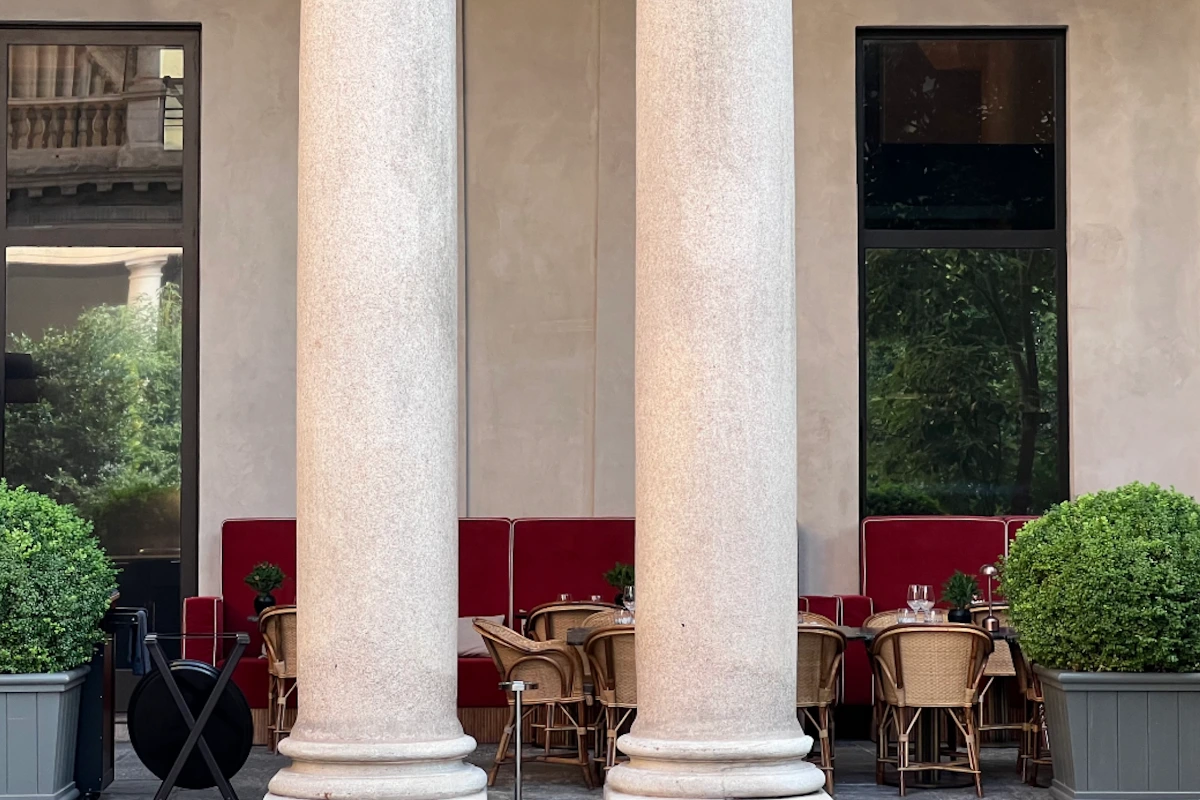
Raw materials and Milanese design heritage inside a deconsecrated chapel
The interiors of Beefbar Milano, designed by Monte Carlo-based studio Humbert & Poyet, preserve the chapel’s sacred structure while weaving in the language of Milanese modernism.
A terrazzo floor with wave-like motifs in green, black, white, and burgundy pays tribute to Luigi Caccia Dominioni. Rooted in Lombardy’s craft, terrazzo is both expressive and enduring—its graphic rhythm linking the restaurant’s zones into one continuous surface.
Verde Alpi marble tables and walnut wainscoting recall Milan’s cafés, where wood and stone convey intimacy and permanence. Chairs by Vico Magistretti and wall lamps by Osvaldo Borsani anchor the space in Italy’s twentieth-century design canon, while bronze and frosted glass lighting by Humbert & Poyet rises to meet the vaults above.
Material honesty defines the project. Stone, terrazzo, and hardwood are not decorative veneers but structural presences meant to age gracefully. Their patina will deepen over time—a quiet statement of Milan’s belief in interiors designed to last.
Humbert & Poyet’s method lies in continuity: framing history through material coherence. In Milan, this approach anchors an international brand within the city’s own design DNA.
Sustainability questioned: global meat sourcing and the limits of a circular model
The menu, directed by Executive Chef Thierry Paludetto, reinterprets Italian classics through imported meats: Kobe beef carbonara, smoked beef amatriciana, pappardelle with Wagyu ragù. Other dishes—such as the croque sando with smoked ribeye ham or veal cordon bleu with truffle cream—merge comfort food with luxury proteins.
Techniques span cultures: robata-style charcoal grilling, wok cooking, tempura frying, and steaming expand the culinary repertoire beyond Italian tradition. This cosmopolitan palette defines Beefbar’s identity—a global brand translating local recipes through international practices.
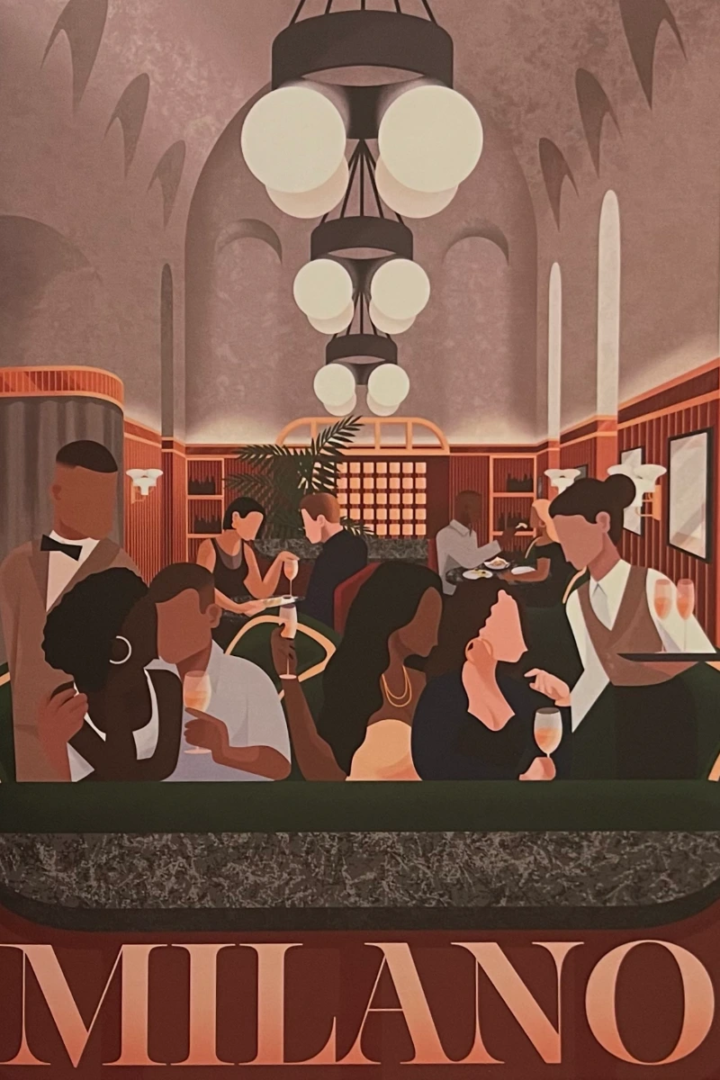
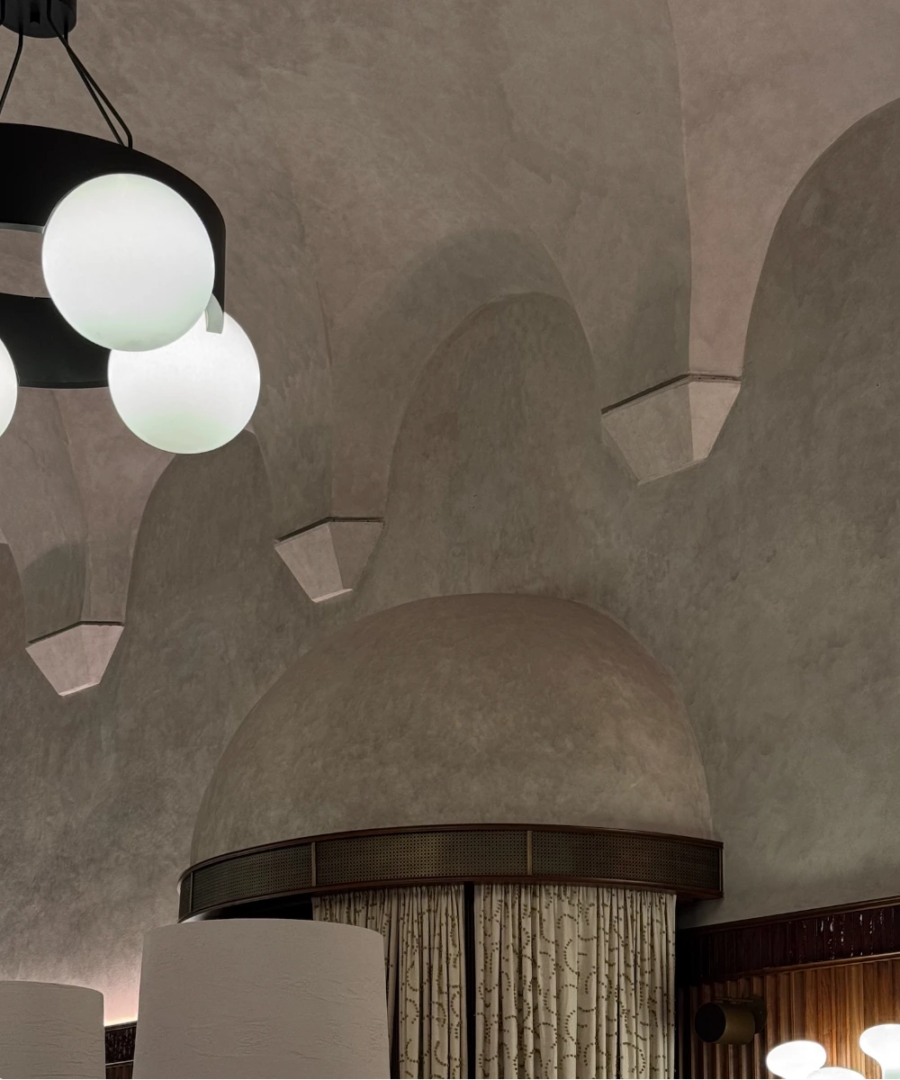
Beefbar has evolved into an award-winning network of restaurants
Under Giraudi’s direction, Beefbar has evolved into an award-winning network of restaurants spanning Europe, the Middle East, Asia, and the Americas. In 2025, the group was named World’s Best Steakhouse Network for the third consecutive year and topped the World’s 101 Best Steak Restaurants ranking in the “multi-outlet” category. Giraudi himself received the Identità Nuove Sfide 2025 award from Identità Golose, acknowledging his ability to merge entrepreneurship, culinary innovation, and sustainable sourcing within a luxury framework. The opening of Beefbar St. Moritz in December 2024 marked another step in this expansion, reinforcing the brand’s balance between global consistency and local interpretation.
Yet the sustainability of such a model remains contested. The restaurant emphasizes traceability and waste reduction, but the ecological cost of transporting beef from Japan, Australia, or the United States is considerable. Fine dining based on rare cuts reveals the tension between global supply chains and circular economies.
Wine sourcing tells a more local story. The list highlights Italian estates—from major houses to small producers—and a glass-enclosed cellar visible from the dining room signals this focus on provenance. The contrast between global meat sourcing and local viticulture underscores the complexity of aligning luxury gastronomy with sustainability.
Across the fine-dining world, this paradox persists. Architecture can embody sustainable principles through material ethics, while cuisine depends on supply networks often beyond a single restaurant’s control. At Beefbar Milano, sustainability is most tangible in its walls and finishes rather than on its plates.
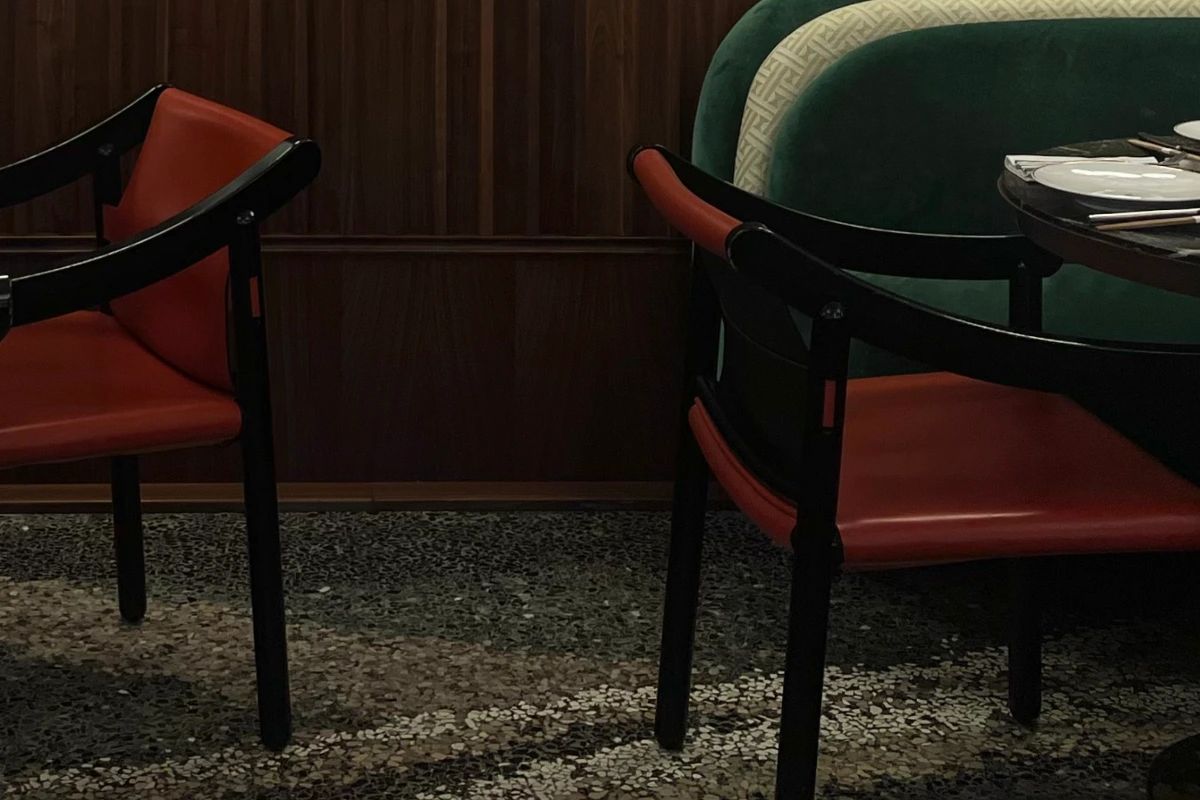
Sustainability in architecture: adaptive reuse and material permanence in Milan’s Quadrilatero
If gastronomy exposes contradictions, architecture offers a more coherent sustainability narrative. Reusing the seminary’s chapel rather than demolishing it preserves embodied energy and reduces the environmental cost of new construction. Adaptive reuse ensures continuity between past and present, extending a building’s life while introducing new meaning.
Humbert & Poyet reinforced this philosophy through enduring materials—marble, terrazzo, walnut, and bronze—chosen for longevity rather than trend. Their durability resists the replacement cycle that defines more fragile interiors. Sustainability here emerges not from technological novelty but from material integrity.
This mirrors Milan’s broader urban strategies: former factories in Tortona, railway yards in Porta Romana, and ecclesiastical complexes across the city are reborn as cultural or commercial hubs. Sustainability in Milan is not solely ecological but cultural—preserving history through transformation, not through static preservation.
This practice aligns with Milan’s design ethos. By converting heritage buildings into spaces of hospitality and commerce, the city maintains a dialogue between architecture and cultural production. Adaptive reuse becomes both an act of preservation and a generator of new urban identity.
Culture and sustainability as parallel narratives
Beefbar Milano embodies two parallel stories. Culturally, it translates an ecclesiastical seminary into a contemporary dining stage—proof of Milan’s ability to integrate heritage into daily life. From a cloistered site of theology to a restaurant open to the public, continuity resides in the cultural gravity of the architecture itself.
Sustainability, however, remains more ambiguous. The building demonstrates permanence and adaptive reuse; the menu reveals the contradictions of global luxury dining in an era of ecological awareness.
These overlapping narratives are emblematic of Milan. The city negotiates its heritage by turning it into function, ensuring continuity through change. Beefbar Milano—housed in a chapel once closed for centuries—embodies this negotiation: a place where culture and sustainability meet, and where their tensions remain visible.
